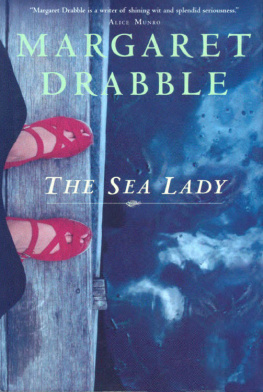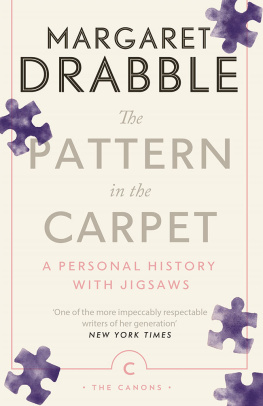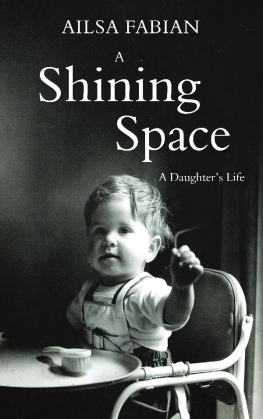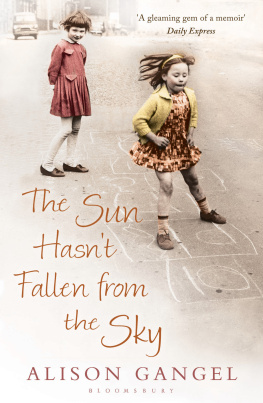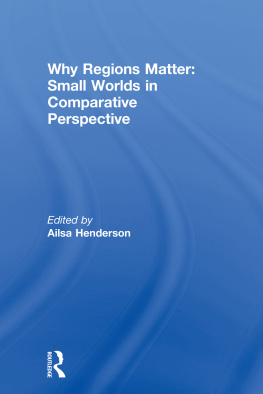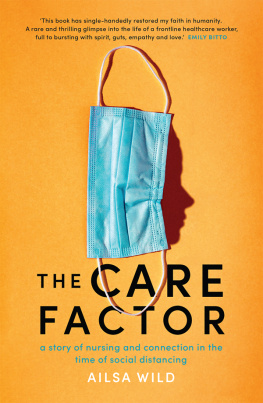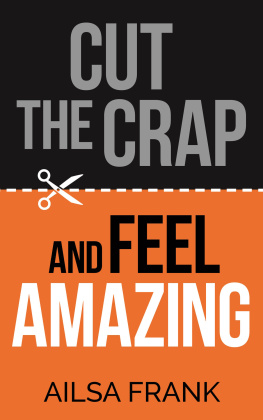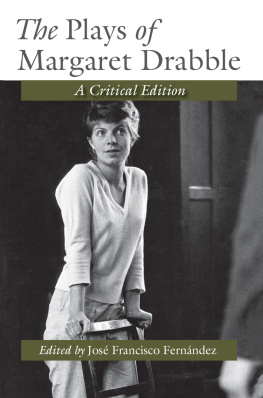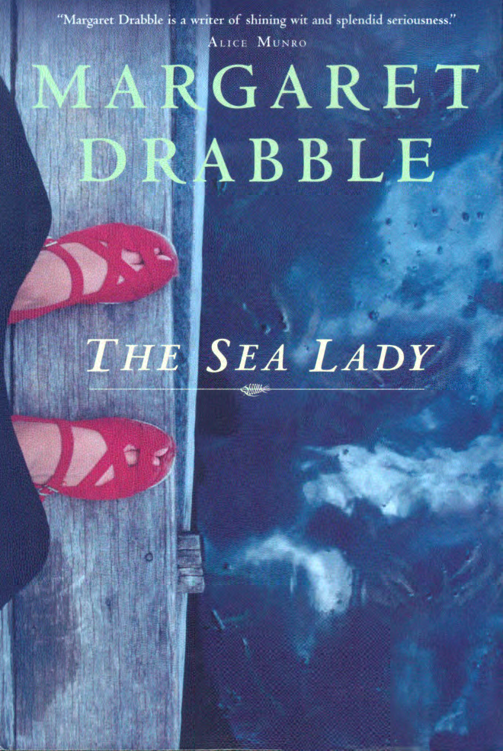
THE SEA LADY
BOOKS BY MARGARET DRABBLE
FICTION
A Summer Bird-Cage
The Garrick Year
The Millstone
Jerusalem the Golden
The Waterfall
The Needle's Eye
The Realms of Gold
The Ice Age
The Middle Ground
The Radiant Way
A Natural Curiosity
The Gates of Ivory
The Witch of Exmoor
The Peppered Moth
The Seven Sisters
The Red Queen
The Sea Lady
OTHER WORKS
Arnold Bennett: A Biography
A Writer's Britain
The Oxford Companion to English Literature (editor) Angus Wilson: A Biography
THE SEA LADY
A Late Romance
MARGARET DRABBLE
MCCLELLAND & STEWART
C e l e b r a t i n g 1 0 0 Years
Copyright 2006 by Margaret Drabble
All rights reserved. The use of any part of this publication reproduced, transmitted in any form or by any means, electronic, mechanical, photocopying, recording, or otherwise, or stored in a retrieval system, without the prior written consent of the publisher - or, in case of photocopying or other reprographic copying, a licence from the Canadian Copyright Licensing Agency - is an infringement of the copyright law.
Library and Archives Canada Cataloguing in Publication Drabble, Margaret, 1939-The sea lady / Margaret Drabble.
ISBN 13: 978-0-7710-2908-0
ISBN 10: 0-7710-2908-X
I. Title.
PR6054.R25S39 2006 823.914
C2006-903152-5
Typeset in Monotype Dante
Typeset by Palimpsest Book Production Limited, Polmont, Stirlingshire Printed and bound in the United States of America McClelland & Stewart Ltd.
75 Sherbourne Street
Toronto, Ontario
M5A 2P9
www.mcclelland.com
1 2 3 4 5
10 09 08 07 06
You'll not forget these rocks and what I told you?
You'll not forget meever, ever, ever?
Dialogue on the Headland
Robert Graves
The Presentation
The winning book was about fish, and to present it, she appeared to have dressed herself as a mermaid, in silver sequinned scales. Her bodice was close-fitting, and the metallic skirt clung to her solid hips before it flared out below the knees, concealing what might once have been her tail. Her bared brown shoulders and womanly bosom rose powerfully, as she drew in her breath and gazed across the heads of the seated diners at the distant autocue. She gleamed and rippled with smooth muscle, like a fish. She was boldly dressed, for a woman in her sixties, but she came of a bold generation, and she seemed confident that the shadowy shoals of her cohort were gathered around her in massed support as she flaunted herself upon the podium. She felt the dominion. It pumped through her, filling her with the adrenalin of exposure. She was ready for her leap.
The silver dress must have been a happy accident, for until a few hours earlier in the day nobody knew which book had carried off the trophy. The five judges had met for their final deliberations over a sandwich lunch in a dark anachronistic wood-panelled room off an ill-lit nineteenth-century corridor.
The result of their conclave was about to be announced. Most of the guests, including the authors, were as yet ignorant of the judges choice.
Ailsa Kelmans wardrobe could hardly have been extensive enough to accommodate all six of the works upon the shortlist, a list which included topics such as genetically modified crops, foetal sentience and eubacteria: subjects which did not 1
easily suggest an elegant theme for a couturier. Would it be suspected that she, as chair of the judges for the shortlist, had favoured a winner to match her sequinned gown, and had pressed for its triumph? Surely not. For although she was derided in sections of the press as an ardent self-publicist, she was also known to be incorruptible. The sea-green, silvery, incorruptible Ailsa. And her fellow-judges were not of a calibre to submit to bullying or to manipulation.
The venue of the dinner might also shortly be observed to be something of a happy accident. The diners were seated at elegantly laid little round tables beneath a large grey-blue fibreglass model of a manta ray, which hung suspended above them like a primeval spaceship or an ultra-modern mass-people-carrier. They could look nervously up at its grey-white underbelly, at its wide wings, at its long whip-like tail, as though they were dining on the ocean floor. Like the costume of Ailsa Kelman, this matching of winner and venue could not have been planned. The museum was a suitable venue for a prize for a general science book with a vaguely defined ecological or environmental message, but the diners could as easily have been seated in some other hall of the huge yellow-and-blue-brick Victorian necropolis, surrounded by ferns or beetles or minerals or the poignant bones of dinosaurs. The dominant theme of fish had prevailed by chance.
The programme was going out live, and noses had been discreetly powdered, hair adjusted, and shreds of green salad picked from teeth. Now the assembly fell silent for Ailsas declaration. Although the winner did not yet know the result, the cameramen and women did, and some of the more media-wise of the guests were able to read the imminent outcome from their disposition. Great sea snakes of thick cable twisted across the floor and under the tables, and thinner ropes of wire clambered up like strangling weeds on to the platform 2
and connected themselves to microphones and control buttons. The technology was at once primitive and modern, cumbersome and smart. The platform on which Ailsa stood was temporary and precarious, and the fake grass matting that covered it concealed a hazardous crack.
Posture, Ailsa, posture, said Ailsa Kelman to herself, as she straightened her shoulders, drew in another deep breath, and, upon cue, began to speak. Her strong, hoarse and husky voice, magnified to a trembling and intimate timbre of vibration by the microphone, loudly addressed the gathering.
The audience relaxed, in comfortable (if in some quarters con-descending) familiarity: they knew where they were going when they were led onwards by this siren-speaker. They felt safe with her expertise. She took them alphabetically through the shortlist, travelling rapidly through the cosmos and the biosphere, sampling dangerous fruits, appraising the developing human embryo, interrogating the harmless yellow-beige dormouse, swimming with dwindling schools of cod and of herring, burrowing into the permafrost, and plunging down to the black smokers of the ocean floor. She summoned up bacteria and eubacteria and ancient filaments from the Archaean age, and presented her audience with the accelerating intersexuality of fish.
Behind her, around her, above her, in the wantonly and wastefully vast spaces of the Marine Hall, swam old-fashioned tubby three-dimensional life-size models of sharks and dolphins, like giant bath toys, and the more futurist magnified presences of plankton and barnacles and sea squirts and sea slugs. Ailsa Kelman shimmered and glittered as she approached her watery climax. And suddenly, all the foreplay of the foreshore was over: Ailsa Kelman declared that the intersexuality of fish had won! The hermaphrodite had triumphed!
Hermaphrodite: Sea Change and Sex Change was the winning title. The winning author was Professor Paul Burden, from the EuroBay Oceanographic Institute in Brittany and the University of California at San Diego.
Applause, applause, as a tall bearded marine biologist picked his way over the seabed of Marconi cables towards the platform to receive his cheque and present his weathered outdoor face to the bright unnatural lights. A television person conducted the applause, encouraging a crescendo, insisting on a diminuendo, attempting, not wholly successfully, to impose a silence. Some members of the captive audience were by now quite drunk, and, deprived of the false concentration of suspense, were growing restless.
Next page
